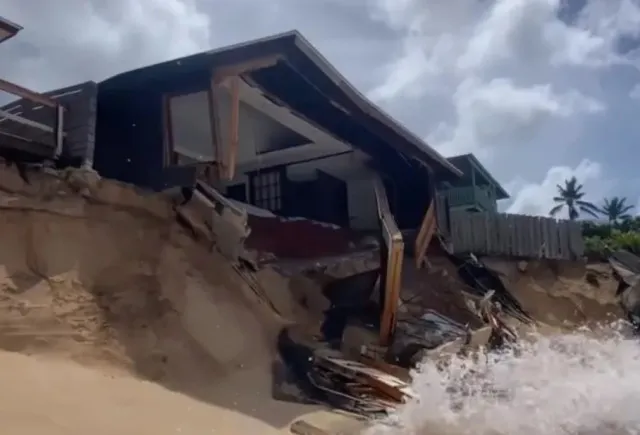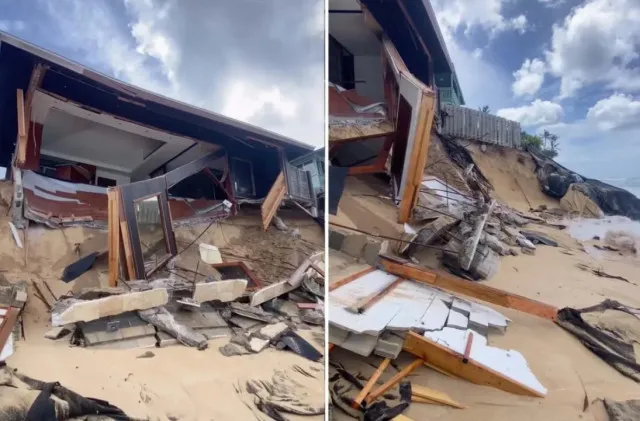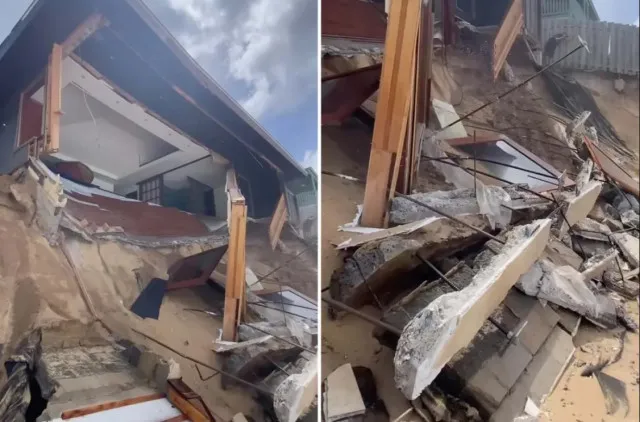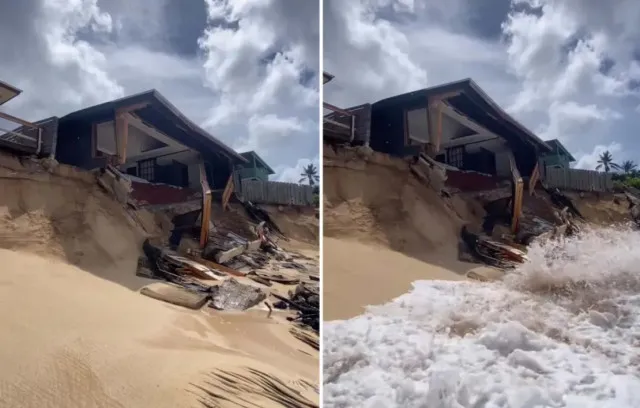Hawaii has filed a lawsuit against a homeowner whose house fell into the ocean, despite his attempts to save it.
Hawaii has filed a lawsuit against a homeowner whose beachfront property on Oahu’s North Shore collapsed into the ocean.
The incident has shocked the local community.
It has also raised important questions about property rights and environmental responsibility for coastal living.

Hawaii files lawsuit against homeowner after house sinks into ocean despite rescue efforts
The homeowner, Josh VanEmmerik, had purchased the house for $1 million in 2021, fully aware of the risks associated with coastal erosion.
Despite the listing description warning of potential erosion issues, VanEmmerik decided to remodel the property.
He later listed it for $2.5 million, but the price was recently lowered to $2 million before the collapse occurred.
Locals were stunned when footage of the house crumbling into the waves surfaced online.

The dramatic images showed the once-luxurious home breaking apart and being swallowed by the ocean, leaving debris scattered across the beach.
This wreckage included concrete, wood, and broken glass, which not only posed a hazard to beachgoers but also marred the natural beauty of the area.
Due to the extensive debris left behind, the state of Hawaii has taken legal action against VanEmmerik.
The lawsuit states that the remains of the house have polluted public land.
This is especially worrying because the area is often visited by families and children.

One local resident expressed frustration, stating, “This is the beach that my daughter plays on. It’s literally covered in broken glass.”
Such comments highlight the community’s concern about safety and environmental impacts.
Before this incident, VanEmmerik had already faced scrutiny from the state.
He was fined $77K in the previous year for violations related to erosion control measures.
To protect his property, he had attempted various methods to hold back the ocean, such as placing sandbags and rocks.
However, these efforts did not comply with state regulations, and officials claimed he failed to remove unauthorized structures promptly.
Deputy Attorney General Danica Swenson pointed out that property owners take a significant risk when they choose to build close to the shoreline.

She stressed that the house’s collapse caused debris to become “unwanted material” on state-owned land.
This situation requires a clean-up and restoration effort.
The state’s legal action is not only about holding VanEmmerik responsible.
It also shows a larger concern about coastal management in Hawaii.
With rising sea levels and increasing erosion, many homeowners face similar challenges.
The state aims to ensure that all beaches, extending up to the high tide mark, remain safe and accessible for the public.

Local residents have expressed mixed feelings about the situation.
Many people are upset with VanEmmerik for not doing enough to prevent the disaster.
At the same time, others believe the state has been slow to deal with the ongoing erosion problem in the area.
Ken Bradshaw, a neighbor, warned VanEmmerik about the risks before he bought the property.
He said, “Erosion’s going to take place. I warned him myself three times — do not buy this property.”
His comments show that the community has known about the risks for a long time.
However, little action was taken to reduce those risks before the collapse.